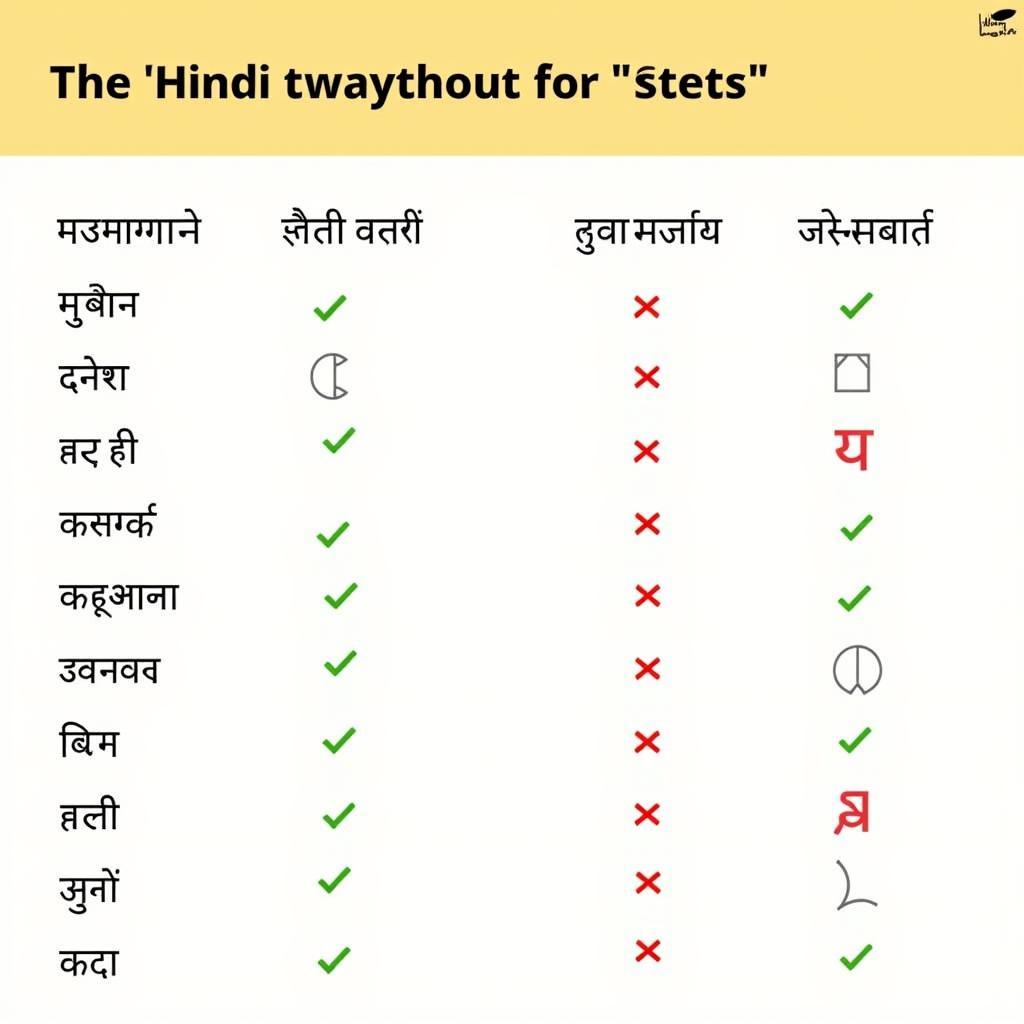Stets Meaning In Hindi is a fascinating topic that delves into the nuances of language and cultural exchange. This article will explore the various interpretations, origins, and contextual usage of “stets” and its potential Hindi counterparts, providing a comprehensive understanding of this unique linguistic query.
Understanding “Stets” and Its German Roots
Before we explore the Hindi meaning, it’s crucial to understand the word’s origin. “Stets” is a German adverb meaning “always,” “constantly,” or “invariably.” It carries a sense of continuity and persistence. Think of it as highlighting an action or state that is unchanging and reliable.
Exploring Potential Hindi Translations of “Stets”
While there isn’t one perfect Hindi equivalent for “stets,” several options capture different aspects of its meaning. Some common translations include:
- हमेशा (hamesha): This is the most straightforward translation and means “always.”
- लगातार (lagatar): This word emphasizes the continuous nature of “stets” and translates to “continuously” or “constantly.”
- निरंतर (nirantar): Similar to “lagatar,” this also means “continuously” but carries a more formal tone.
- सदैव (sadaiva): This is a more literary and less common translation, meaning “always” or “eternally.”
 Hindi Translations for Stets
Hindi Translations for Stets
Choosing the Right Hindi Word for “Stets”
The best choice depends on the specific context. If you’re talking about a habit, “hamesha” might be suitable. For an ongoing process, “lagatar” or “nirantar” could be more appropriate. And for something eternal or unchanging, “sadaiva” would be a fitting choice.
What are common scenarios where “stets” might be used?
In German, “stets” is often used to describe someone’s consistent behavior or a recurring event. For instance, “Er ist stets pünktlich” (He is always punctual) or “Sie ist stets hilfsbereit” (She is always helpful).
How does the cultural context impact the translation of “stets”?
The cultural context plays a vital role. While “hamesha” is a general translation, other options might be more appropriate depending on the specific situation and the level of formality required.
Stets in Literature and Everyday Conversation
“Stets” might appear in German literature or music, reflecting a character’s unwavering dedication or a constantly present theme. In casual conversation, its usage is less frequent, with simpler alternatives like “immer” often preferred.
Conclusion: Finding the Right Nuance for “Stets” in Hindi
Understanding the meaning of “stets” in Hindi requires more than just a simple translation. It involves appreciating the subtleties of both languages and choosing the Hindi word that best captures the intended nuance. Whether it’s “hamesha,” “lagatar,” “nirantar,” or “sadaiva,” the choice depends on the context and the specific shade of meaning you wish to convey. Ultimately, appreciating the nuances of both German and Hindi allows us to communicate more effectively and bridge cultural gaps.
FAQ
- What is the most common Hindi translation of “stets”? (Hamesha)
- What Hindi word emphasizes the continuous nature of “stets”? (Lagatar/Nirantar)
- Is there a more formal Hindi translation for “stets”? (Sadaiva)
- How does context affect the choice of Hindi translation? (Context dictates the most appropriate nuance)
- Is “stets” frequently used in everyday German conversation? (Less frequent than simpler alternatives like “immer”)
- What does “stets” mean in German? (Always, constantly, invariably)
- Why is understanding the German origin of “stets” important? (It provides the foundation for accurate translation)
If you need further assistance, please contact us at Contact@ViperCircle.com or visit our office at G-5, लोअर परेल, सेनापति बापट मार्ग, मुंबई, महाराष्ट्र – 400013, भारत।. We have a 24/7 customer support team ready to help.